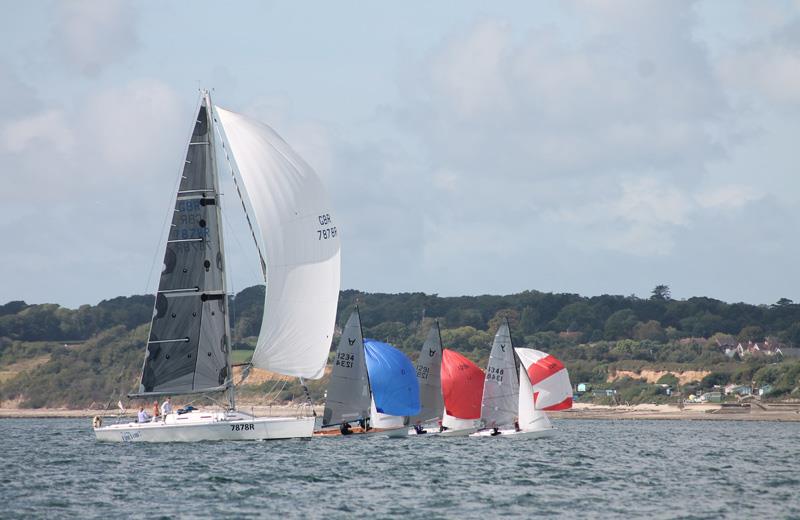
Seamanship - An interview with David Downs
by YachtsandYachting.com 12 Apr 2020 11:25 BST

Gul Osprey Proctor Centenary Round the Isle of Wight race © Mary Reddyhoff
In a series of articles on seamanship for dinghy cruisers, we speak to David Downs, who was involved in planning a race around the Isle of Wight for Osprey dinghies, celebrating Ian Proctor's centenary year in 2018. This event was a particularly interesting mix, taking dinghies further out to sea than a normal race, but not a solo cruise, and there were support boats.
The Osprey class has participated in many round-the-Wight events, starting in 1953 in a mixed-class event of approx 200 boats (an Osprey won). In that year some craft took 12 hours to complete the course, and others had to beach. More recently there were other Osprey-only trips, one in a very fast seven hour time. In the 2018 race which David was involved in it took around eight and a half hours, and the nine boats finished within 15 minutes of each other.
In trying to calculate how long to allow for the circumnavigation, knowing the speed of a dinghy is not really useful for complicated calculations; anecdotal evidence of past trips give a better idea of how long each leg will take. Of course this depends on the wind, so events like this will be on a weather watch, and be cancelled if the wind doesn't appear in suitable quantities. Arriving at certain turning points of the course at certain points in the tide is crucial.
Plenty of accurate information is available for that last point, which usually dictates the starting time. It was 6am in this instance! However, the real 'early start' is in the months beforehand, when all the planning gets done. With lots of interest for the race, but no idea of the true numbers that would commit, it must have made planning difficult. The race officer and safety officer had Yachtmaster qualifications, and there were several other members of the class involved too. One of their first worries was how to be diplomatic if a sailor entered who they knew wasn't really up to the challenge. Luckily it never came to having to say "no" to anyone, as the committed entrants were all long-time racers able to handle a boat competently in waves and swell.
Each boat could be relied on to provide two mobile phones, but in order to provide 'redundancy' in the communication department, a handheld VHF radio was needed too. Luckily a sponsor was able to provide GPS trackers. Four RIBs and a cruiser to act as mother ship provided the safety cover. Each carried some spare parts that might be needed.
Bits of paper provided the first line of defence though. Each boat was given a laminated chart showing where to beach in emergency, and a tide chart with arrows on. The organisers forced each boat to complete a checklist before rigging up, and sign that they had checked everything.
With a large lump of land to go around, instead of buoys and a triangle-sausage course, sailors soon realised they were going to be sailing 'legs' that were longer and less-changeable than their usual experience. This can be brutal. Staying on one tack for two hours soon had the crews longing for a reason to change their stance on the trapeze, although later in the day the longed-for rests in the form of a tack or gybe had become "distinctly ponderous" - see the official report.
David's final words seemed to go against everything he had been saying about the extreme discomfort. When asked if he'd do the race round the Wight again: "Absolutely! We mustn't leave it another 30 years!"